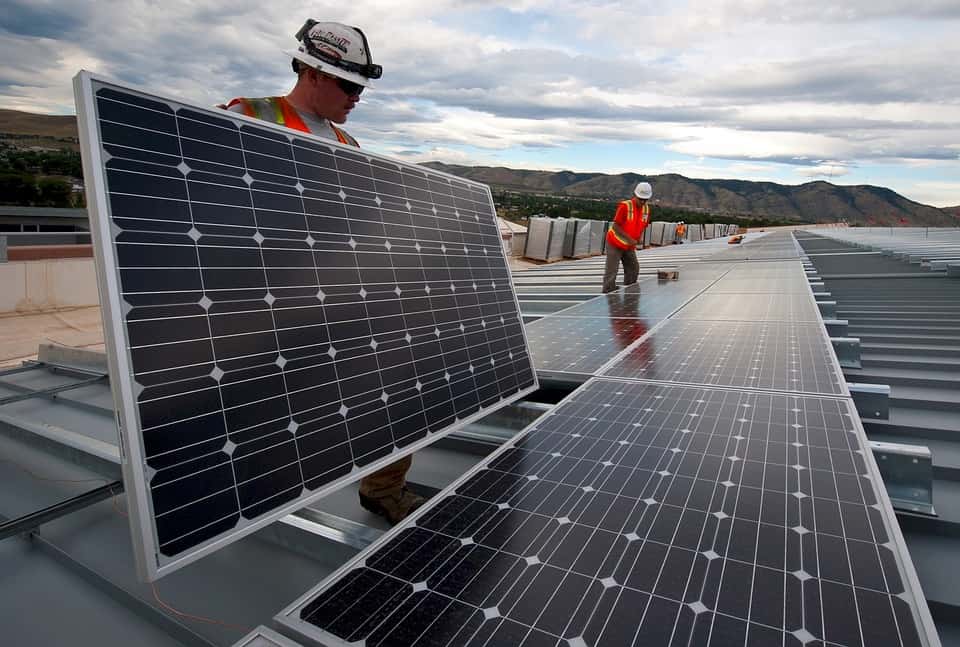Turning the power of the sun into electricity is now a growing industry with many kinds of solar panels available in the market today. The problem now is that it’s hard to choose which one to get among the many brands. Harnessing solar power is definitely more environment-friendly and economical than relying on regular fossil fuels.

Thus, it is important to determine how solar panels can do this magnificent conversion of sunlight into electricity. Hereunder are the ten most cost-effective and highly efficient solar panelling in the market to date. You can check them out at https://www.gemenergy.com.au/solar-panels-rockhampton to see for yourself.
1. QDSC or Quantum DOT Solar Cells
Quantum dots allow the rolling solar cell type of fabrication. This is a relatively new technology that relies on quantum dots as one that absorbs solar radiation to help generate electrical power. It has an efficiency rating of 13.4 per cent, but its cheap price is too good to resist.
2. Dye-sensitized Solar Cells
These are known for their unique energy converting process that is akin to the photosynthesis process of plants. It has the capacity to convert both natural light coming from the sun and artificial light from fluorescent lamps into energy that can give electrical power. This wonderful device has a technology energy rate of 14.1 per cent.
3. Organic Solar Cells
These organic solar cells make use of conventional PV cells. This means this technology uses the traditional photovoltaic effect to harness solar energy and then generate electrical power from it. Organic polymers, which are highly conductive, are used to absorb light, carry/transfer charge, and finally, generate electricity. Chinese researchers proudly stated that their version of this organic type of solar cell possesses a17.3% rating.
4. Unstable Perovskite Solar Cells
This sounds like a Russian name, but it is not. This uses perovskite structured material which has the capacity to destabilize the light-harvesting element found in the solar cell. This is known for its low-cost production. On top of that, these cells are very easy to modify.
5. Cadmium Telluride Solar Cells
The photovoltaic material used by this cell is cadmium telluride, with an energy of 22.1% that is considered on the high mark. Currently, this piece of innovation is the second leading solar panel in terms of its use around the globe. This is a very thin solar cell making it low cost.
6. C.I.G.S solar cells
This means Copper Indium Gallium Selenide (CIGS) solar cell, with another nickname called CIS. The current efficiency rating is 23.35 %. These super-thin panels can be used for many things, but its high cost makes it difficult to purchase for general public consumption.
7. Monocrystalline Silicon Solar Cells
These are considered as the most productive solar panels used for commercial and industrial needs. What sets apart these PVC cells are the top quality silicon ingots used to make them. This is efficient in terms of space and a good choice for city properties. Its efficiency rating of 26.7%, it is not a surprise why businesses use these cells.
8. Tandem Perovskite Solar Cells
Tandem signifies that they come in pairs. Noteworthy, these solar cells were mainly used for space crafts that fly into outer space. The reason for that is it is ultra-expensive though highly functional. These days, they are trying to craft a commercial-grade version, so many people can enjoy this technology. The efficiency rating is 27.3%, making it one of the most efficient solar panels in the market today.
9. Gallium Arsenide Solar Cells
These kinds of solar cells have the capacity to convert solar radiation into electrical energy at a rate of 29.1%. With such a high level of efficiency, NASA favours this product. They have used it for several tests in outer space, in order to explore potential future uses.
10. Multi-junction III-V
Last, but not least, the highest-ranking is this with the remarkable figure of 46%. These utilize many layers of semiconductors to generate electricity. This paves the way for the absorption of a wider range of solar energy, which helps in maximizing the conversion rates.
Although there are many products available in the market these days, people will still have to do their own research in order to get the solar panel module that best fits their needs. In the future, there will be more buildings and home outfitted with this kind of technology. Harnessing the sun’s full power for the benefit of mankind is a worthwhile endeavour. After all, the sun’s rays are perpetually there for every single human being to enjoy.
Also Read- Top 7 Ways of Improperly Installing Synthetic Grass